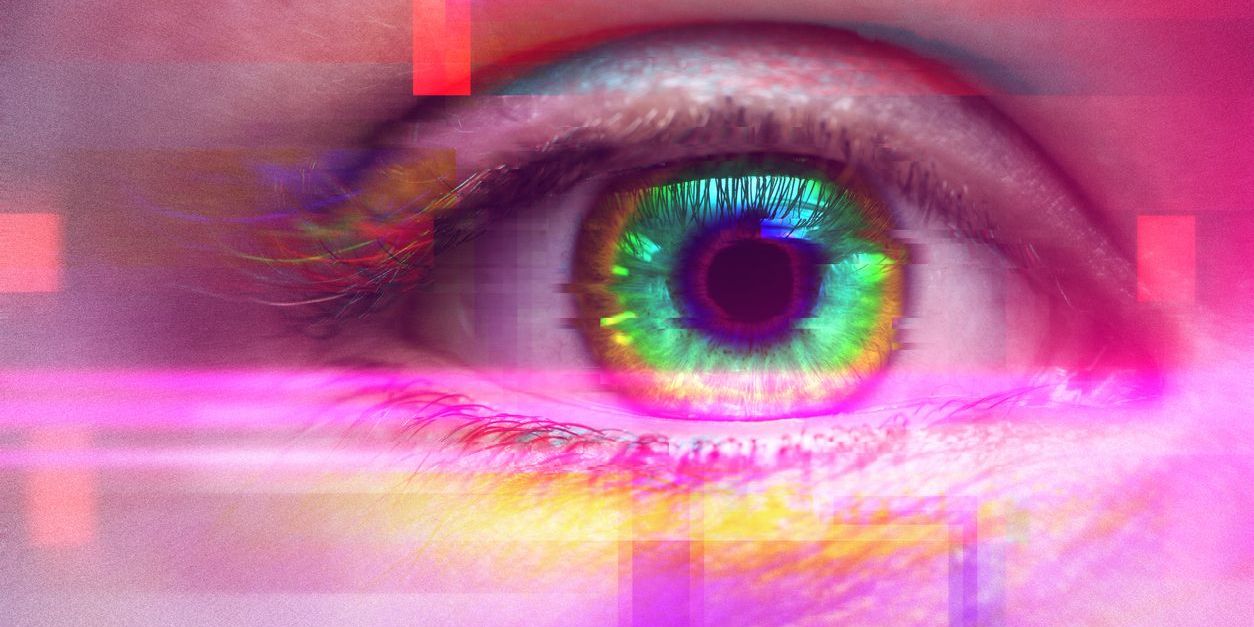Summary: Preliminary results from new research show a novel, lab-engineered molecule can improve psychedelic medication designed for schizophrenia treatment.
Key Points:
- Evidence shows that for people with treatment-resistant depression (TRD), psychedelic can offer symptom relief for some patients when other therapeutic approaches are ineffective.
- Reservations about the impact of psychedelic medication on schizophrenia have prevented extensive research into the use of psychedelic mediation for schizophrenia.
- Researchers have attempted to design a molecule that has the benefits of psychedelic medication, without the properties that create risk for patients with schizophrenia
Psychedelic Medication for Schizophrenia: Why and Why Not?
One of the most significant developments in psychiatry in the past twenty years is the introduction of psychedelic drugs into mental health treatment. Currently, there are two medications considered psychedelics in use for psychiatric conditions in the U.S.:
- SPRAVATO®. Approved the Food and Drug Administration (FDA) in 2019 for people diagnosed with treatment-resistant depression (TRD) and major depressive disorder (MDD) with suicidal ideation and/or suicidal behavior.
- Ketamine/IV ketamine infusions. Approved by the FDA as an analgesic/anesthetic in 1970 and currently in off-label use for psychiatric conditions such as treatment-resistant depression (TRD).
While these medications can help people with the disorders we list above, mental health professionals are reluctant to prescribe psychedelics for schizophrenia.
Why not try psychedelics for people with schizophrenia?
Their concern is that the psychedelic effects of psychedelic medication, which can include visual and auditory hallucinations, may exacerbate symptoms of schizophrenia, which can also include visual and auditory hallucinations.
That’s a credible why not, which we’ll address in a moment.
Now, let’s look at the other side: the why.
The demonstrated success of psychedelics such as SPRAVATO® for treatment-resistant depression, suicidality, and off-label use for anxiety and post-traumatic stress disorder (PTSD) has rekindled interest in psychedelic medication for schizophrenia, based on observations from clinicians and a recent resurgence in peer-reviewed research on the topic.
Data from the paper “New Paradigms of Old Psychedelics in Schizophrenia” shows psychedelics are well-tolerated in clinical setting and can:
- Promote growth in atrophied brain areas associated with schizophrenia
- Activate serotonin receptors in the brain, which are associated with symptoms of schizophrenia
- Promote positive mood in patients with anxiety and depressive disorders
- Promote positive outcomes for patients with a history of trauma and/or adverse childhood experiences
- Act as a reset mechanism for brain areas related to mental health disorders, including schizophrenia, which may resolve or reduce symptoms
The collective weight of these findings translated into momentum that resurrected interest in the use of well-known psychedelic – lysergic acid diethylamide (LSD) – for mental health treatment, including schizophrenia. The authors of a new publication, “Molecular Design of a Therapeutic LSD Analogue With Reduced Hallucinogenic Potential,” explain the need for research into psychedelic medication for schizophrenia:
“Psychedelic compounds, such as lysergic acid diethylamide (LSD), can promote the growth of atrophied cortical neurons, which is relevant to the treatment of numerous brain conditions. However, their hallucinogenic properties have limited their adoption as medicines and preclude their use in certain patient populations, such as those with schizophrenia or a family history of psychosis.”
In this study, the research team attempted to engineer a new molecule, based on LSD, that retains the positive properties of psychedelics listed above and eliminates properties that promote visual and auditory hallucinations, which would complicate schizophrenia treatment and potentially exacerbate schizophrenia symptoms.
Engineering a New Molecule for Psychedelic Treatment for Schizophrenia: Did it Work?
In a word, yes.
We’ll share the results in a moment. First, let’s take a quick look at an opinion/perspective paper released three years ago that forecast the arrival of this new research. In the publication “Could Psychedelic Drugs Have a Role in The Treatment Of Schizophrenia? Rationale And Strategy For Safe Implementation,” an expert on psychedelics in mental health treatment observes:
“Psychedelic drugs could have a role in treating cortical atrophy and cell loss in schizophrenia, and ameliorating the negative symptoms… several strategies that could be implemented to mitigate the danger of psychotogenic effects, [including] use of non-hallucinogenic derivatives, which are currently the focus of intense study.”
Now, three years later, we have the results from one group of researchers involved in the intense study of psychedelic medication for schizophrenia, which we introduce in the preceding section. The goal of the effort was to engineer a molecule that retains the properties of LSD that can help people with schizophrenia an eliminate the properties of LSD that may exacerbate symptoms of complicate treatment.
It worked.
After designing the new molecule – called (+)-JRT – and testing its action in vitro, i.e. in test tubes under lab conditions, and in vivo, i.e. in the rodent model in lab conditions, the team found the following.
Psychedelic Medication for Schizophrenia: What Can (+)-JRT Do?
Results show the lab-designed (+)-JRT molecule:
- Shows high affinity for serotonin receptors, which play a role in schizophrenia, and can promote the growth of cortical neurons
- Promotes neuroplasticity, which can improve recovery from any mental health disorder, including schizophrenia:
- 46% increase in dendritic spine density
- 18% increase in synaptic density in the prefrontal cortex
- Does not exacerbate the positive symptoms of schizophrenia, i.e. does not cause visual or auditory hallucinations – an essential goal of this research
- Does not promote expression of genes related to schizophrenia – another core goal of this research
- Produces a strong antidepressant effect, more potent than current psychedelics in use
- Promoted cognitive flexibility and restored deficits in learning associated with schizophrenia
Overall, the outcome of this research effort exceeded the expectations of the research team. In the past, the properties of molecules like LSD prevented researchers and mental health professionals from administering them to patients with schizophrenia. With this molecule, an LSD-derivative without the potentially negative effects, we may soon have a new tool at our disposal to support patients with schizophrenia.
How This Research Can Help Our Patients
One problem with treating schizophrenia is the side-effect profile of anti-psychotic medications typically prescribed to patients upon diagnosis. Many patients who take traditional and atypical antipsychotics prescribed for schizophrenia report the following side effects:
- Heart and circulatory problems
- High blood sugar
- High cholesterol
- Immune dysfunction
- Impaired cognition
- Aggression/hostility
- Suicidality
- Tardive dyskinesia
- Type 2 diabetes
- Weight gain
- Constipation
- Dizziness
- Drowsiness
- Dry mouth
Experts summarize the impact of these side effects of antipsychotics as follows:
“In schizophrenia patients, the quality of life of the patient is greatly compromised due to the long-term exposure to such adverse effects of antipsychotic medications predisposing them to various illnesses such as cardiovascular, metabolic complications, sexual dysfunction, and heightening suicidal tendencies, which increases mortality.”
That’s why research like this is critical, and these findings could move schizophrenia treatment forward in very real and measurable ways. If the research continues its current trajectory, then it’s a very real possibility that psychedelic medication can help our patients with schizophrenia.
To further emphasize the need for new schizophrenia treatment, we’ll review the prevalence of schizophrenia and long-term consequences of untreated schizophrenia. We’ll close this article with a list of resources for finding high-quality, evidence-based treatment for schizophrenia.
The Prevalence and Consequences of Schizophrenia
The National Institute of Mental Health (NIMH) report and the World Health Organization (WHO) report the following prevalence of schizophrenia in the U.S. and worldwide:
- Schizophrenia and psychotic disorders, U.S. adults 18+:
- 25% – 0.64% (525,000 – 1,344,000)
- Schizophrenia and psychotic disorders, worldwide prevalence 18+:
- 33% – 0.75%, (19,800,000 – 45,000,000)
While those prevalence numbers seem low, in the big picture, it’s important to understand that, due to differences in diagnostic methods, the complex nature or schizophrenia, and the fact that the symptoms of schizophrenia often overlap with other mental health disorders, those figures probably underestimate the actual prevalence of schizophrenia in the U.S. and the world.
Nevertheless, it’s clear that in the U.S., around a million people have schizophrenia, and worldwide, around 30 million people have schizophrenia. Without treatment, all those people have an increased risk of experiencing the following:
- Disrupted relationships
- Suicidality
- Co-occurring mental health disorders
- Alcohol/substance misuse
- Medical problems
- Impaired work function
- Impaired educational attainment
- Financial problems
- Social isolation
This potential new psychedelic medication for schizophrenia – a lab engineered LSD analog – may join the list of standard treatments for schizophrenia, which includes:
- Medication
- Psychotherapy:
- Individual
- Group
- Family
- Lifestyle changes:
- Diet
- Exercise
- Integrative therapies
Although the LSD analog – (+)-JRT – still needs to pass human trials for both efficacy and safety, the possible benefits are well worth the time and effort. Here’s how Dr. Olson, a lead researcher on the molecule design, describes this new molecule:
“JRT has extremely high therapeutic potential. Right now, we are testing it in other disease models, improving its synthesis, and creating new analogues of JRT that might be even better.”
The possibility of a medication for schizophrenia that has all the benefits of psychedelics, none of the drawbacks, and none of side effects associated with traditional and/or atypical antipsychotic medication, gives us hope that we can improve long-term outcomes for our patients with schizophrenia. We’ll keep an eye on the research, and report here when we learn anything new.
Finding Help: Resources
If you or someone you know needs professional treatment and support for schizophrenia, please contact us here at Crownview Psychiatric Institute: we can help. In addition, you can find support through the following online resources:
- The National Alliance on Mental lllness (NAMI): Schizophrenia Information
- The National institute of Mental Health (NIMH) Schizophrenia Resources
- The Substance Abuse and Mental Health Services Administration (SAMHSA) Living With Schizophrenia
- American Psychiatric Association (APA): Treatment Locator
- SAMHSA: Early Serious Mental Illness Treatment Locator


 Gianna Melendez
Gianna Melendez Jodie Dahl, CpHT
Jodie Dahl, CpHT